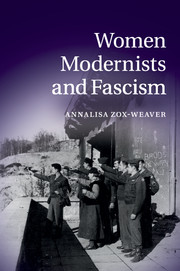Chapter 1 - In her image
Leni Riefenstahl’s cinematic Hitler
Published online by Cambridge University Press: 25 October 2011
Summary
Introduction
In a 2002 interview on her 100th birthday, Leni Riefenstahl flaunted her former subject’s admiration for her work: “Hitler was absolutely crazy about The Blue Light.” According to her version of events, the film, first released in 1932, not only gratified her aspiration to auteurship, but also converted her most consequential viewer into an enduring fan. By this account, Hitler’s attraction to her aesthetic inspires cinematic history’s most controversial enterprise, Triumph of the Will (1935). Where her “dance on the sea” in Arnold Fanck’s 1926 film, The Holy Mountain, had stirred Hitler’s admiration for her physical elegance and beauty, The Blue Light captivated him for her cinematic ingenuity. Taken together, her careers as a dancer, then actress, and, finally, director led to the Nazi film that conclusively determined the trajectory of her professional and personal life. As her 1987 memoir, The Sieve of Time, describes it: “[The Blue Light] was pivotal in my life … because Hitler was so fascinated by this film that he insisted I make a documentary about the Party Rally in Nuremberg. The result was Triumph of the Will.” While this anecdote leaves out Riefenstahl’s own confessed admiration for Hitler and abridges the complicated sequence of events that led to the famous documentary – including her production of its mediocre antecedent, Victory of Faith (1933) – it succeeds in enlisting Hitler for her own self-exalting narrative. Her own “apocalyptic vision” and temporary paralysis upon first witnessing the Führer at the Berlin Sports Palace in 1932 was mutually gratified by the pleasure he derived from viewing her arresting cinematic performances. Of course, even with the intricate biographical choreography of her memoir, Riefenstahl’s lifelong effort to distance herself from the Nazi party remains impossible to reconcile with her compulsion to enfold Hitler into a personal narrative of life-as-myth.
- Type
- Chapter
- Information
- Women Modernists and Fascism , pp. 24 - 58Publisher: Cambridge University PressPrint publication year: 2011

